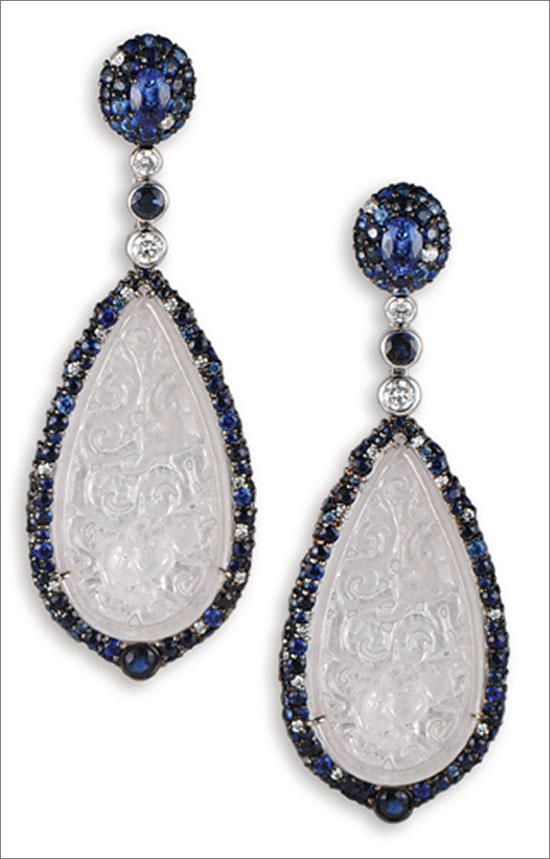Delicate Gemstones Design and Setting
Consumers today are more open to wearing unusual gems, and there is a trend among designers to incorporate less familiar stones into their work. No longer wedded to the classic trio of ruby, sapphire, and emerald, jewelry makers today are drawn to lapis, moonstone, opal, and turquoise, to name a few. But while these gemstones offer the uniqueness consumers are asking for, they can also pose stressful challenges to the jewelers who work with them.
5 Minute Read
The modern consumer is all about unique. Studies have shown that Generation Y jewelry shoppers dare to be different, opting for custom designs and designer pieces over run-of-the-mill product.
When it comes to gemstones, the same philosophy holds true. Consumers today are more open to wearing unusual gems, and there is a trend among designers to incorporate less familiar stones into their work. No longer wedded to the classic trio of ruby, sapphire, and emerald, jewelry makers today are drawn to lapis, moonstone, opal, and turquoise, to name a few. But while these gemstones offer the uniqueness consumers are asking for, they can also pose stressful challenges to the jewelers who work with them.
Most of these gems are relatively fragile, and therefore must be handled with care. Design, fabrication, and finishing techniques all play into keeping the stones safe. Technologies such as CAD/CAM and laser welding can help, making possible setting and fabrication techniques that were not an option in the past.
On the following pages, six designers share examples of pieces that showcase delicate gemstones. They explain what they did in the design and fabrication process to ensure those gemstones not only look their best, but also stay safe during both the creation of the piece and subsequent wear.
Pamela FromanPamela Froman Fine Jewelry Los Angeles To keep the edges of this teardrop-shaped Ethiopian opal safe, Pamela Froman bezel-set it in her own alloy of 18k pink and yellow gold. She added a diamond-studded swirl over the bottom of the bezel to form an extra layer of protection for the opal's delicate tip, mirroring the element at the top. Set from the back, the opal is covered with a filigree cutout sheet of gold, then laser welded at the edges, taking advantage of the laser's ability to weld next to heat-sensitive gemstones. |
Mark SchneiderMark Schneider Design Long Beach, California A large, irregularly shaped opal in Mark Schneider's shop was destined for reincarnation in the form of a 14k yellow gold jellyfish. But while he was working on the initial design, the opal cracked in two pieces. A crisis for some, Schneider just went with the flow, having a lapidary intentionally crack the opal at the opposite end to create three separate pieces, then modifying his design to suit. | |
Schneider had the lapidary clean up the edges and carve the opals a bit to give the jellyfish a more realistic appearance. Since the opals have unevenly shaped backs, setting them required special care. Trying to simply press them into a flat-backed bezel-type setting would likely end in disaster, as the combination of open space and pressure could cause the gems to break again. To avoid this, Schneider pressed the opals side-by-side into wax, and carved and cast the setting in one piece to fit them precisely. He first set the tentacles with white, black, and yellow diamonds, attached the pearl tentacles to jump rings, then set the three opals in place and snugged the metal up around them. | |
Dawn MuscioD. Muscio Fine Jewelry Studio Atlanta When repurposing delicate gemstones from an heirloom piece, the challenges of keeping those gems intact intensify. Such was the case in this pendant and earring set by Dawn Muscio. The client wanted to use opals from a piece she had inherited in a new design, some of which were chipped. Muscio's solution was to create heavy bezel settings cast in 18k gold for the opals. These heavy settings not only serve to hide any pre-existing damage, but also provide a durable barrier to prevent any further damage during wear. To set the 3 mm diameter round opals, Muscio placed each inside a cast 18k yellow bezel, then inserted a slice of 3 mm diameter tube behind the opal and secured it in place with a laser welder. The oval opals are secured in a similar manner but with a cast piece that matches their shape. |
The award-winning Journal is published monthly by MJSA, the trade association for professional jewelry makers, designers, and related suppliers. It offers design ideas, fabrication and production techniques, bench tips, business and marketing insights, and trend and technology updates—the information crucial for business success. “More than other publications, MJSA Journal is oriented toward people like me: those trying to earn a living by designing and making jewelry,” says Jim Binnion of James Binnion Metal Arts.
Click here to read our latest articles
Click here to get a FREE four-month trial subscription.
You assume all responsibility and risk for the use of the safety resources available on or through this web page. The International Gem Society LLC does not assume any liability for the materials, information and opinions provided on, or available through, this web page. No advice or information provided by this website shall create any warranty. Reliance on such advice, information or the content of this web page is solely at your own risk, including without limitation any safety guidelines, resources or precautions, or any other information related to safety that may be available on or through this web page. The International Gem Society LLC disclaims any liability for injury, death or damages resulting from the use thereof.
The All-In-One Jewelry Making Solution At Your Fingertips
When you join the Ganoksin community, you get the tools you need to take your work to the next level.
Trusted Jewelry Making Information & Techniques
Sign up to receive the latest articles, techniques, and inspirations with our free newsletter.
